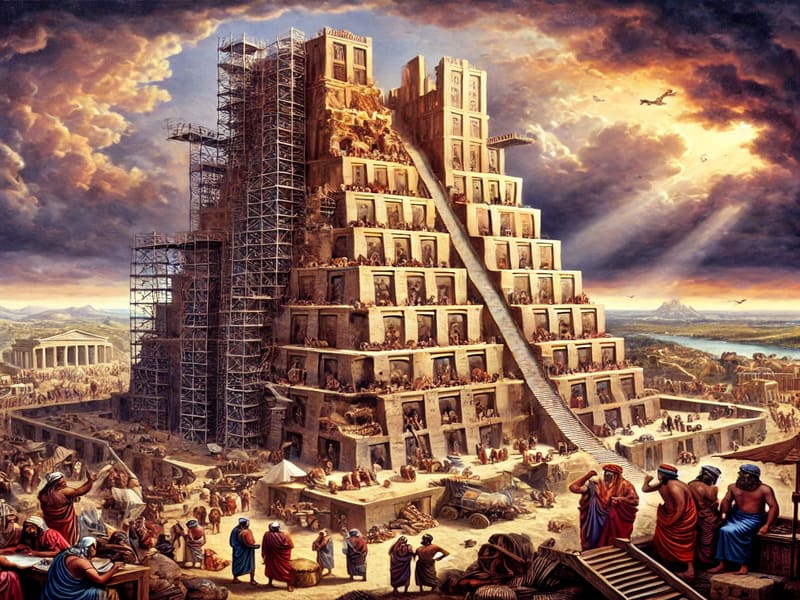
Thorn Ville Church – The story of the Tower of Babel is one of the most intriguing narratives in the Bible, found in the Book of Genesis (Genesis 11:1-9). It describes an ambitious attempt by humanity to build a tower reaching the heavens, an endeavor that was ultimately thwarted by divine intervention. Leading to the confusion of languages and the dispersion of people across the earth.
While the biblical account is rich in theological and cultural significance, it also raises fascinating questions about its historical and archaeological context. Could the Tower of Babel have been a real structure? What does archaeology reveal about the ancient world that might have inspired this story? By examining historical records, ancient Mesopotamian architecture, and linguistic studies, we can explore the possible realities behind this legendary account.
The biblical narrative describes a time when humanity spoke a single language and lived together in unity. The people decided to build a massive tower in the land of Shinar (often associated with ancient Mesopotamia). Using bricks and bitumen to construct a structure that would reach the heavens. However, according to the Bible, God saw their arrogance and ambition as a threat. Confusing their language and scattering them across the earth. This story is often interpreted as an explanation for the origin of linguistic diversity and a reflection on human pride and divine sovereignty.
“Read More: Natural Supplements for Boosting Your Energy and Health”
Although there is no definitive archaeological evidence proving the existence of a singular Tower of Babel, researchers have identified several structures in Mesopotamia that could have inspired the biblical account. The most notable candidates are the ziggurats, massive stepped temples built by the Sumerians, Babylonians, and Assyrians to honor their gods.
The Tower of Babel story is not just about architecture; it also serves as a powerful allegory for the origins of linguistic diversity. Linguistic studies suggest that the ancient Near East was home to multiple language families, including Akkadian, Sumerian, and later Aramaic. The biblical authors, observing the diversity of languages around them, may have sought to explain their origins through this narrative.
Additionally, similar myths of language division exist in other cultures. For example:
These parallels suggest that the story of Babel might reflect a broader ancient understanding of human diversity and divine influence.
The story of the Tower of Babel continues to captivate historians, linguists, and theologians alike. It serves as a reflection on human ambition, cultural identity, and divine authority. Whether based on real historical structures or a theological allegory. The tale remains one of the most enduring and thought-provoking narratives in religious history.
Through ongoing archaeological discoveries and scholarly interpretations. Our understanding of the Tower of Babel and its significance in ancient civilizations continues to evolve. Whether viewed as historical fact or symbolic legend. The narrative provides profound insights into the nature of human unity, division, and the quest for knowledge.
Thorn Ville Church - Biblical archaeology serves as a powerful bridge between ancient texts and the tangible world. Through it,…
Thorn Ville Church - The Church of the Nativity in Bethlehem stands as one of the most revered and historically…
Thorn Ville Church - In the midst of the fast pace of modern life, it’s easy to feel overwhelmed, confused,…
Thorn Ville Church - In the early chapters of human history, as recorded in the Book of Genesis, one remarkable…
Thorn Ville Church - For centuries, the Bible has served as a foundational text for millions around the world, revered…
Thorn Ville Church - Among the historical treasures of Eastern Europe, few monuments stand as majestically and meaningfully as Saint…